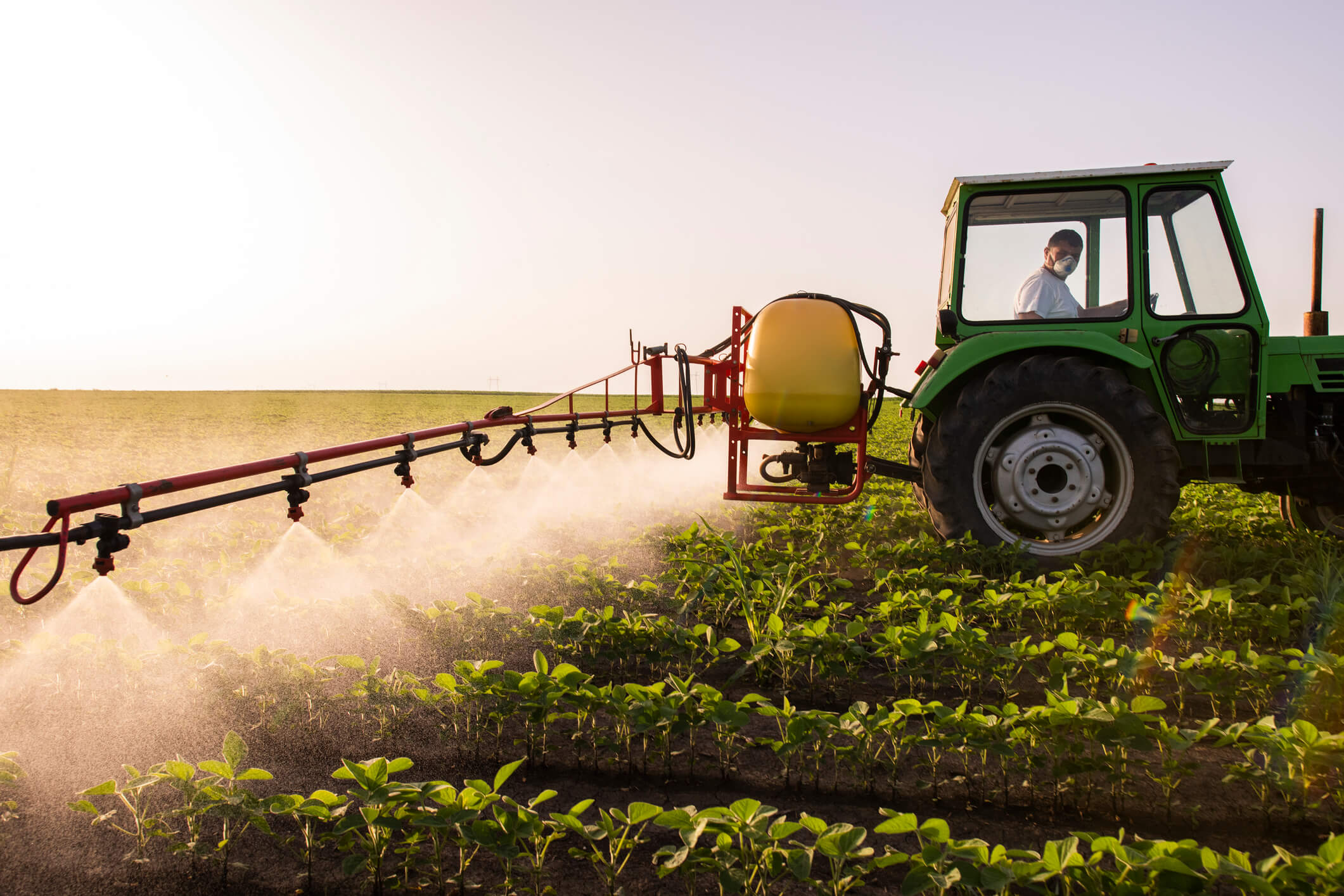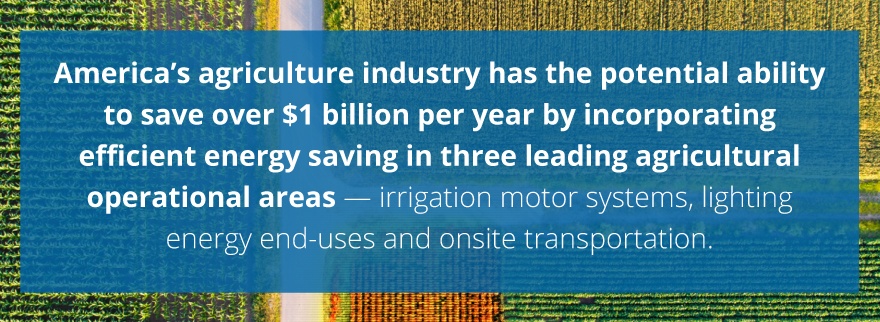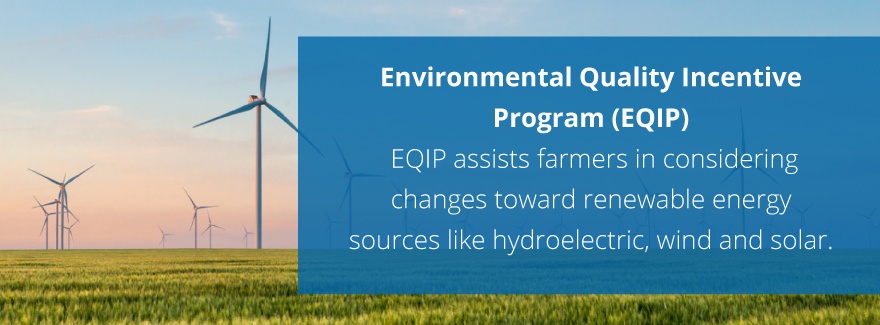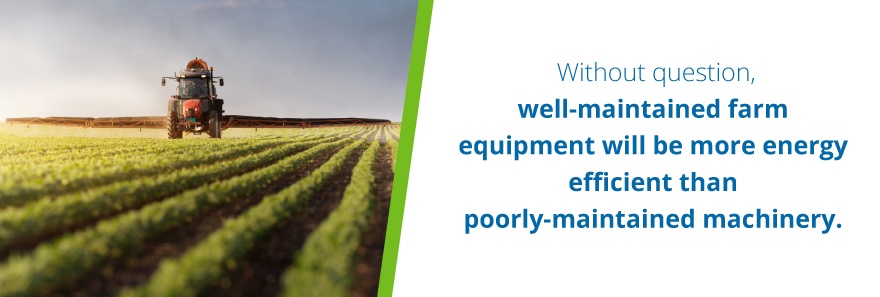

Farms, dairies, and other agricultural operations use a lot of energy. Farmers need fuel for their farming equipment and grain drying, dairies need to process and cool their milk, and greenhouses must use electricity to control temperatures. Individuals who work in agriculture can drastically reduce energy costs and boost their bottom line by deploying energy best practices for agriculture. For example, a dairy can lower expenses by 80% and double efficiency by installing energy-efficient motors on vacuum pumps and staying on schedule with motor maintenance.
If you work in agriculture, you can increase profits and productivity by practicing energy efficiency. Use this guide to help you get started. We’ll cover everything from the challenges of energy conservation in agriculture to tips for increasing energy efficiency in farming. We will also dive in to ways farmers can source and save money on fuel. First, let’s look at how energy is being consumed in the agriculture industry.
Enter your contact details, we’ll guide you to a solution, so you can get back to running your farm!

Learn more about energy efficiency for agriculture! Click on a link below to jump to that section in the content.
Energy is essential to fueling agricultural production. We need energy for powering equipment, fertilizing soil, irrigating land, sustaining livestock, processing food, and transporting the final products to market. The United States Department of Agriculture (USDA) views farms as being both energy consumers and energy producers. Most farms consume far more energy than they produce in the way of non-renewable fossil fuels like diesel fuel, gasoline, and propane. Farms also consume large amounts of electricity.
However, some farms produce renewable energy through installing solar panels and wind turbines, and leasing land to oil and natural gas producers. The consumption-to-production rate varies according to farm type, location, and size. It also varies based on whether the farm is a true agricultural business concerned with profitability, or if it’s one of many small “hobby” farms where the owners deal in agriculture for pleasure or to supplement income.
The USDA defines “business” farms as operations where the principle spends most of their time on agricultural activities, or if the farm generates over $350,000 in annual gross revenue. USDA studies show that only 41% of American farms have a “business” classification, but these businesses account for 93% of agricultural productivity. Business farms also consume over 90% of American agricultural energy.
Farms spend a significant percentage of their budget on power. For example, the USDA reports that 15% of agricultural production costs in America are energy-related. That includes both renewable and non-renewable energy forms. As energy prices rise, farmers will need to tighten their budgets substantially and consider partnering with energy providers to help decrease costs.
Fossil fuels account for most of America’s agricultural energy consumption. Fossil fuels used for energy include coal, oil, and natural gas. Farms are consuming fewer fossil fuels then they have in the past, but it is still an important part of operations for agriculture.
For example, a study on Energy Consumption in U.S. Agriculture reports that overall agricultural energy consumption dropped from a high of 2.4 quadrillion British Thermal Units (BTU) in 1978 to two-thirds that rate in recent markets. This was due to exceptionally high fossil fuel costs during the OPEC crisis. As a result, farmers and equipment manufacturers became more interested in energy efficiency.
A big energy consumption change came when diesel-fueled engines replaced gasoline models. Propane and natural gas advancements also led to fossil fuel efficiency. Today, many farmers practice field tillage conservation, size machines for the best energy-saving results and improve irrigation systems which are one of the largest energy consumers in the entire agricultural industry.
According to the USDA, the best way everyone in the agricultural business can lower costs is through energy efficiency. They define energy efficiency as finding methods to reduce energy consumption while still achieving the same service and production level. The USDA also states there is a distinction between energy efficiency and energy conservation in agriculture. The term “conservation” refers to reducing both overall energy consumption and productivity.
The American Council for an Energy Efficient Economy (ACEEE) estimates that America’s agriculture industry has the potential to save over $1 billion per year by incorporating energy efficiency in three leading agricultural operational areas — irrigation motor systems, lighting energy end-uses and on-site transportation.

Large commercial farms benefit the most from energy efficiency. Large farms have the financial resources to invest in switching to energy-efficient equipment and can enjoy the long-term gains of reduced energy costs and greater profits. Small and medium-sized farms, on the other hand, face challenges in energy-efficient farming. In some cases, small and medium-sized farms rely on finding more affordable, reliable, and consistent sources of energy.
One of the biggest energy efficiency challenges for small and medium-sized farms is gaining access to investment capital. Another big challenge is accessing information and training material about what energy-efficient options farmers have. It’s a combination of both issues that often prevent the “little guys” from reaching energy efficiency optimization.

Fortunately, available government and industry programs are designed to remove barriers that prevent low-volume farmers from introducing energy efficient farming steps. These steps would show real improvement in reducing energy consumption and making their operations more energy efficient.
Farms in the United States vary more than just by size and financial capacity. Farms also vary by geography and climate. Both of these physical parameters have a dramatic effect on a farmer’s energy requirements.
Then, there are dry climates like California. A white paper report by the Alliance to Save Energy estimates that California farmers may use up to 30% of their energy costs in irrigation. The study on federal, state and private agricultural partnerships found that more efficient water pumps and irrigation systems could save the industry $180 million per year.
The Alliance to Save Energy gives examples where Wisconsin dairy farmers could save $24.7 million with more efficient milk cooling and barn heating systems. They compared California and Wisconsin on geographic and climatic conditions. While diverse in both areas, the two states did have something in common — the ability to seek financial and informational help from federal government programs.
Below are the top four programs:
REAP is a United States federal government program that directly assists small and medium-sized farmers in implementing clean energy and improving energy efficiency. It brings attention to monetary and educational barriers that smaller rural farmers have in reducing energy costs. REAP has programs for funding energy-efficient products, making improvements in renewable energy systems, conducting energy audits and studying energy efficiency feasibility.
The EQIP program deals with effects stemming from energy efficiency improvement in America’s farms. Its goal is to fund and encourage agricultural improvements that reduce harmful emissions. EQIP assists farmers in considering changes toward renewable energy sources like hydroelectric, wind, and solar. Geothermal energy is another priority for the federal EQIP assistance program.

SARE provides grants and educational assistance to American farmers who have an interest in broad topic ranges. While its prime mandate is agricultural research and education, SARE helps farmers adopt energy conservation and efficiency methods.
This federal program belongs to the USDA’s Natural Resources Conservation Service (NRCS) whose mandate includes responsible land stewardship. The NRCS recognizes farmers as being prime land stewards. They provide financial and technical assistance for small and medium-sized farmers who promote resource conservation. Part of the NRCS assistance program includes helping farmers become more energy efficient, as this ultimately affects their farmland stewardship.
These are the important United States federal government assistance programs designed to help small and medium-sized farmers overcome obstacles to becoming more energy efficient. There are also state, local and private organizations offering energy conservation and efficiency assistance. They provide solutions to the common challenges farmers face by helping to remove financial and educational barriers.
Enter your contact details, we’ll guide you to a solution, so you can get back to running your farm!
Agricultural experts often speak about energy costs in two terms. One is direct energy costs which are those absorbed directly by the farm business owner. Direct energy costs include:
Basically, these are the costs of doing business. The only ways to reduce direct energy costs is by consuming less energy, finding efficient ways to do more work with the same amount of energy, and finding affordable and consistent providers of fuel, electricity, and maintenance.
The other energy cost affecting American agriculture producers is indirect energy costs. Those figures lie below the farming surface, but they’re nonetheless passed on to all farmers. Indirect energy costs include:
Fossil fuels are a prime indirect energy cost example. Fossil fuels have to be extracted, refined and delivered to the farmer. Those figures are built into the fuel price, and they’re unavoidable.
Anything a farmer can do to improve energy efficiency has many advantages and lowers both direct and indirect costs. Some advantages of energy efficiency in agriculture include:
Energy efficient agriculture practices aren’t all about saving money and increasing profits. Energy efficient equipment and agricultural practices lower pollution and increase healthy lifestyles.
Every farmer needs to weigh their return on investment when making changes to their operation. They need to assess if there will be a financial benefit as well as an environmental improvement. Then prudent farmers have to calculate if they’re willing to make an investment that pays off in the short term or the long term.
It really depends on the type of agricultural venture, its location, the climate, and the farmer’s overall commitment to the industry. Big investments call for well-thought-out decisions. However, many energy-saving ideas can be implemented easily and with little capital costs. Here are some ways to make your farm more energy efficient regardless of size:

Shipley Energy is a professional wholesale fuel supplier serving farms and all agricultural operations in Pennsylvania, Maryland, Delaware, New Jersey, Virginia, West Virginia and parts of New York State. We’ve delivered energy efficiency to farms since 1929. Over the years, we’ve focused on our own energy efficiency within our fleet. At Shipley Energy, we’ve reduced our expenses and passed on indirect cost savings to thousands of farmers.
Shipley Energy is proud to supply agricultural fueling solutions to America’s farms. Besides our regular residential fuel services and our commercial fuel services, Shipley Energy pays special attention to American farmers. These are some of the benefits farmers enjoy when partnering with Shipley Energy:
Shipley Energy agricultural fuel solutions include constant supplies of off-road and on-road diesel, gasoline, propane, heating oil and more. All our fuel services provide customers with maximum energy efficiency and the best possible return on their investment. With Shipley Energy, you can expect 24-hour servicing for equipment fueling and storage tank fueling.
For more information on agricultural energy efficiency and fuel economy, call Shipley Energy today at 800-839-1849. You can also call our agricultural fuels specialist direct at 717-356-3740 or contact us online.